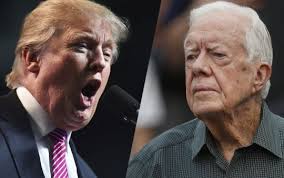Yes. But to be clear, much of this
past term was very discouraging. Since this is widely reported—and grieved by
liberals— let me point out two modest signs of encouragement.
I clearly recall when
Anthony Kennedy was appointed by President Reagan. I was a recent law graduate.
The appointment depressed me, much as his retirement does. Very strange, my change in attitude.
For 17 years, he was
a solid conservative vote. Suddenly, he started to be the fifth vote in major
cases on gay rights and abortions.
He changed—somewhat—and it
is the way he changed that liberals recall as he retires.
Chief Justice John Roberts
is on a similar trajectory. Over the past 12 years, Roberts has
moved steadily from the right to the center in his voting. Over the last two
years, he has voted as often as Justice Kennedy as the “median justice”— a
statistical measure of a justice’s vote compared to each other on a
liberal-to-conservative scale.
If you are a liberal and think this
is small comfort, you’re probably right. But keep in mind that Roberts was the
key fifth vote to uphold the constitutionality of Obamacare (Affordable Care
Act).
My hunch is that Roberts has accepted
the fact that he can be a pivotal justice by siding with the remaining four
liberals, just like Kennedy. What will be his issues? Will he move more to the
center? Time will tell.
One other item of note: The
Court this term issued only 59 signed opinions, the lowest number since 1858.
Personally, I hope they continue on this trend to decide fewer cases—and I am
serious.
It’s time for Congress to stand up to the executive branch, whether the
president is Trump, Obama, or the next person who governs by executive order.
The nation will be better off with fewer major controversies settled by the
Supreme Court (e.g., the Bush-Gore election of 2000).
























